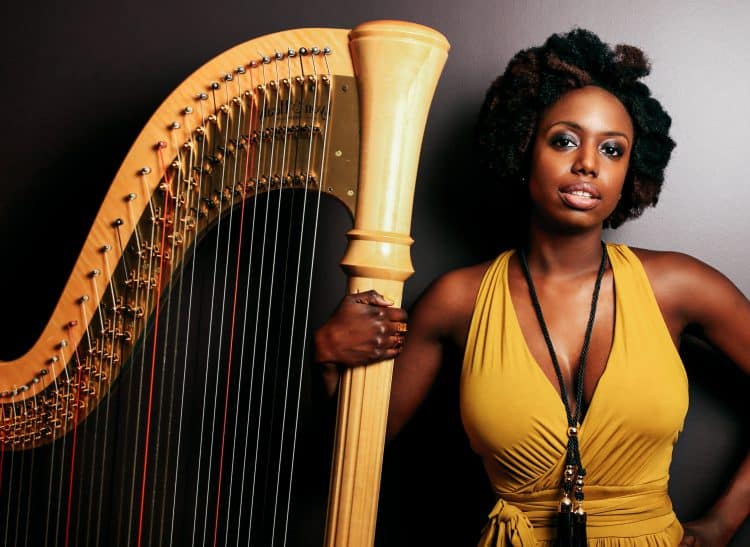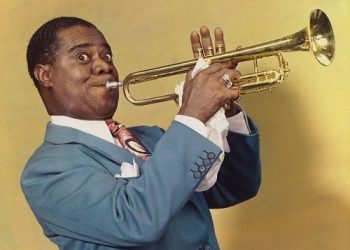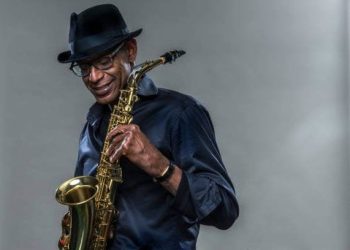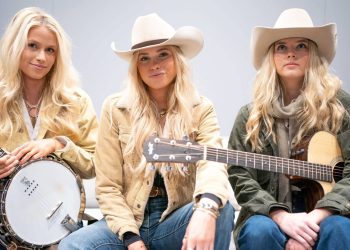The harp, with its ethereal sound and intricate strings, has captivated audiences for centuries. Its unique ability to evoke deep emotions makes it a favorite among musicians and listeners alike. In this exploration of the top 15 best harp players of all time, we delve into the lives and legacies of those who have masterfully wielded this enchanting instrument. From classical virtuosos who have graced the grand concert halls to innovative contemporary artists pushing the boundaries of genre, these musicians have left an indelible mark on the world of music.
Imagine the delicate plucking of strings, creating melodies that transport you to another realm. Each of these harpists has a story to tell—stories of passion, dedication, and a profound connection to their craft. Whether it’s the hauntingly beautiful compositions of the past or the vibrant sounds of modern interpretations, their contributions have shaped the harp’s rich tapestry. Join us as we celebrate the artistry and brilliance of these remarkable musicians, whose talents have not only defined the instrument but have also inspired generations of harpists and music lovers around the globe. Prepare to be enchanted by their melodies and moved by their mastery!
1. Anne Sofie von Otter
Anne Sofie von Otter is a celebrated Swedish mezzo-soprano whose distinctive voice and musicality have earned her a reputation as one of the most versatile and accomplished opera singers of her generation. Renowned not only for her operatic roles but also for her intimate collaborations with harpists, von Otter brings an expressive and captivating dimension to her performances. Her ability to effortlessly combine her rich, warm voice with the delicate sounds of the harp creates a unique synergy that resonates deeply with audiences.
Her collaborations with harpists, especially in art song and orchestral settings, showcase her exceptional skill in blending vocal and instrumental textures. The harp, with its shimmering and ethereal sound, complements von Otter’s voice, creating a mesmerizing soundscape that enhances the emotional depth of the music. This pairing has been a hallmark of her recordings, where the delicate interplay between her voice and the harp enriches both the music and the listener’s experience.
Von Otter’s career spans a wide range of genres, from opera to chamber music, demonstrating her ability to navigate complex vocal techniques while maintaining an emotional connection with the audience. Her repertoire includes works by composers like Gustav Mahler, Benjamin Britten, and Sergei Rachmaninoff, where the interplay between voice and harp is often central to the piece’s expressive power.
Her artistry is not confined to the stage, as von Otter is also a respected recording artist. Her albums, which often feature collaborations with prominent harpists, are noted for their emotional expressiveness and clarity. These recordings have made her an influential figure in the classical music world, and her commitment to exploring new musical territories continues to inspire listeners and musicians alike.
2. Yolanda Kondonassis
Yolanda Kondonassis is one of the leading harpists of her generation, known for her extraordinary technique, expressive depth, and innovative contributions to the world of harp music. A passionate advocate for contemporary music, she has expanded the harp’s traditional boundaries, commissioning numerous works from modern composers and bringing a fresh, dynamic energy to the harp repertoire. Kondonassis’s performances are a blend of technical brilliance and emotional expressiveness, making her a standout figure in the harp world.
Her technical prowess is unmatched, with her ability to navigate complex rhythms and intricate passages with precision and ease. However, it is her ability to convey the emotional depth of the music that truly sets her apart. Whether playing a delicate solo or performing with an orchestra, Kondonassis brings a level of nuance and sensitivity that transforms the music, allowing her listeners to experience every subtle shift in tone and mood.
Kondonassis is not only dedicated to expanding the harp’s repertoire but also to making the instrument more accessible and exciting for a new generation of listeners. Her commissions and premieres of new works have introduced innovative sounds and ideas to the harp, incorporating elements from classical, jazz, and experimental music. These contributions have helped to redefine the harp’s role in contemporary music and inspired countless musicians to think outside the box.
In addition to her performance career, Kondonassis is an influential educator and advocate for the harp. Her masterclasses and teaching engagements around the world have inspired and mentored young harpists, ensuring that the next generation of musicians will continue to push the boundaries of what is possible on the instrument. Kondonassis’s legacy, both as a performer and as an educator, has made her a true trailblazer in the world of harp music.
3. Nicanor Zabaleta
Nicanor Zabaleta was one of the most celebrated harpists of the 20th century, a Spanish virtuoso whose contributions to the world of classical music and the harp have left a lasting legacy. Known for his exceptional technique and emotional depth, Zabaleta elevated the harp to new heights, earning worldwide acclaim for his ability to bring both the grandeur and the subtleties of the instrument to life. His career spanned many decades, and his performances have had a profound influence on the way the harp is perceived and played today.
Zabaleta’s playing was defined by a remarkable command of the instrument, allowing him to navigate complex passages with ease while maintaining a rich, expressive tone. His technical mastery was paired with an emotional depth that made every performance a deeply moving experience for his audience. Whether performing a classical concerto or a solo work, Zabaleta’s interpretations were always infused with a sense of musical storytelling, drawing listeners into the heart of the music.
Zabaleta was also instrumental in expanding the harp repertoire. His collaborations with composers and his dedication to championing new works for the harp have resulted in an impressive body of music that has become a staple of the harp canon. His recordings continue to inspire harpists and listeners alike, showcasing the versatility of the instrument across a range of musical styles.
In addition to his performance career, Zabaleta was a respected teacher and mentor. His pedagogical approach emphasized the importance of musicality and expression, encouraging his students to cultivate both their technical skills and their ability to communicate through music. His legacy as a performer, composer, and educator has left an indelible mark on the world of classical music and the harp.
4. Dorothy Ashby
Dorothy Ashby was a trailblazing jazz harpist whose innovative fusion of classical and jazz elements redefined the harp’s role in contemporary music. In a genre historically dominated by piano and guitar, Ashby’s harp became a distinctive voice in jazz, bringing a unique sound and sensibility to the world of improvisation. With her pioneering work, Ashby not only elevated the harp as a legitimate jazz instrument but also helped to popularize it in a variety of musical contexts.
Ashby’s technical prowess and improvisational skills were extraordinary. She approached the harp with a level of creativity and flexibility that allowed her to seamlessly blend traditional jazz rhythms with classical harmonies. Her ability to innovate within the jazz idiom is evident in her iconic albums such as The Hip Harpist, where she showcases her talent for improvisation and her deep understanding of jazz harmony. These albums helped to introduce the harp to a broader audience and set the stage for future generations of jazz harpists.
Beyond her technical skill, Ashby’s playing was marked by its warmth and soulfulness. Her performances exuded a deep sense of musicality, effortlessly swinging between smooth, melodic lines and more complex, rhythmically intricate passages. Her mastery of the harp’s many tonal colors allowed her to express a wide range of emotions, from playful and energetic to introspective and melancholic.
Ashby’s influence extends beyond her recordings, as she also mentored and inspired a new generation of musicians who saw the potential of the harp in jazz and other contemporary genres. Her work remains a touchstone for both jazz and classical harpists, and her legacy continues to shape the sound of modern jazz harp playing.
5. Marcel Tournier
Marcel Tournier was a French harpist and composer whose contributions to the world of harp music are immense. As one of the leading figures in the early 20th century, Tournier played a pivotal role in shaping the modern harp repertoire. His compositions, noted for their lyrical beauty and technical demands, are staples of the harp canon, and his performances helped to solidify the harp as a respected solo instrument in classical music.
Tournier’s playing was marked by a profound emotional depth, with each note resonating with a deep sense of meaning. His approach to the harp was marked by a refined touch, allowing him to bring out the full range of the instrument’s tonal qualities. His performances were known for their expressiveness and attention to detail, capturing the emotional essence of the music in every phrase.
As a composer, Tournier brought a fresh, modern sensibility to the harp. His works often featured rich harmonies and intricate counterpoint, making them both technically challenging and deeply rewarding for the performer. Pieces such as Trois Pièces and Le Printemps are considered cornerstones of the harp repertoire, and Tournier’s innovative use of the harp’s capabilities set the stage for future generations of composers.
In addition to his work as a performer and composer, Tournier was also an influential teacher. His pedagogical legacy continues to inspire harpists today, with his approach to technique and interpretation shaping the way the instrument is taught. Through his compositions, performances, and teachings, Marcel Tournier helped to elevate the harp to a position of prominence in the world of classical music.
6. Ruth Inglefield
Ruth Inglefield is a distinguished harpist known for her enchanting performances and significant contributions to both the performance and education of the harp. Throughout her career, Inglefield has developed a reputation not only for her virtuosity but also for her deep commitment to nurturing the next generation of harpists. As a performer, she has captivated audiences worldwide with her expressive and nuanced interpretations of both classical and contemporary works, making her a key figure in the global harp community.
Her performances are a delicate balance between technical precision and emotional depth. Inglefield’s ability to translate the intricacies of the music into something deeply resonant for the listener has made her a standout in the classical music world. Her command of the harp’s wide range of tones, from the gentlest of plucks to the most resonant glissandi, allows her to paint vivid musical landscapes that draw listeners into her performances. Whether performing a baroque concerto or a modern composition, Inglefield’s touch is always imbued with a sense of lyrical beauty and warmth.
Inglefield’s influence extends far beyond the concert stage, as she is also a passionate educator. She has dedicated much of her life to teaching young harpists, offering both practical instruction and a deeper understanding of the harp’s expressive potential. Her mentoring style focuses on helping students connect emotionally with the music, and her commitment to music education has helped to cultivate a new generation of harpists who continue to push the boundaries of the instrument.
Her ability to blend storytelling with music makes her performances unique. Each piece she plays is not merely a technical exercise but a narrative, capturing the mood and emotion of the music in a way that is deeply compelling. Ruth Inglefield’s contributions to the world of harp music—both in performance and education—have cemented her place as a true ambassador for the instrument.
7. Alice Coltrane
Alice Coltrane was a visionary musician whose work transcended traditional boundaries, blending jazz, classical music, and spiritual influences into a unique and groundbreaking sound. Known for her spiritual and introspective approach to music, Coltrane’s harp playing was a central part of her compositions and performances, adding a layer of depth and transcendence that resonated with listeners. She was one of the most innovative jazz harpists, and her work continues to inspire musicians across genres to this day.
Coltrane’s musical journey was deeply influenced by her spiritual beliefs, particularly her interest in Hindu philosophy and her studies of Eastern music. These influences are evident in her harp playing, where she often incorporated meditative, otherworldly tones and intricate, improvisational structures. Her album Journey in Satchidananda is a prime example of her groundbreaking approach, blending her harp with elements of jazz, Indian classical music, and a free, spiritual exploration of sound. The album features lush, hypnotic melodies on the harp, which serve as the foundation for the ensemble’s meditative and free-form improvisations.
What set Coltrane apart from other harpists was her ability to create a soundscape that felt expansive and deeply spiritual. Her improvisations were often fluid and open-ended, creating an atmosphere where time seemed to slow down. The ethereal quality of the harp, paired with Coltrane’s mastery of improvisation, allowed her to transcend traditional jazz forms, creating music that was both complex and deeply emotive.
Coltrane’s work in the fusion of jazz and spiritual music helped to redefine the role of the harp in modern music. She opened up new avenues for musicians who sought to incorporate the harp into genres that were traditionally not associated with the instrument. Through her compositions, performances, and albums, Alice Coltrane remains a pioneering force in the world of jazz and harp music.
8. Harpo Marx
Harpo Marx, best known as one of the legendary Marx Brothers, brought an entirely unique approach to the harp, combining his comedic genius with musical ability to create a memorable and one-of-a-kind stage presence. While primarily celebrated for his role in films and on the vaudeville stage, Harpo’s harp performances were a major part of his act, and his ability to integrate humor with music made him a beloved figure in entertainment history.
Unlike many of his contemporaries, Harpo played the harp without uttering a single word, communicating his emotions through his music and expressive facial gestures. His performances were marked by an infectious sense of fun, as he would often play classical and popular tunes, adding his own whimsical twist. Harpo’s playful energy and mastery of the harp made his performances stand out, as he was able to blend technical skill with comedic timing, often leaving audiences in stitches while simultaneously awed by his musical talent.
Though his harp playing was largely for comedic effect, Harpo was a highly skilled musician. He had a natural ear for melody and an ability to coax beautiful, lyrical sounds from the instrument. His performances, often accompanied by his brothers’ antics, were a delightful mix of music and comedy, with Harpo’s harp providing a soothing and elegant contrast to the chaos that surrounded him.
Harpo Marx’s ability to merge music and comedy created a truly unique presence on stage, and his contributions to the entertainment world are still remembered fondly today. His approach to the harp was a reminder that music, even in its most formal settings, can be full of joy, humor, and lightheartedness, and he will forever be remembered as a groundbreaking figure in both music and comedy.
9. Judith Liber
Judith Liber is a contemporary harpist whose performances have garnered attention for their dynamic range and emotional depth. Known for her ability to connect with her audience on an emotional level, Liber’s performances often feel like an intimate conversation, with every note and phrase conveying a clear sense of narrative. Whether performing classical works, contemporary pieces, or her own compositions, her music draws listeners into a world of lush textures and deeply moving soundscapes.
Liber’s playing is marked by a technical mastery of the harp combined with a lyrical sensibility. She has a rare ability to balance the precision of the instrument with a rich emotional depth, creating performances that are both technically brilliant and emotionally evocative. This duality is especially evident in her chamber music performances, where she has the rare ability to blend seamlessly with other musicians while also asserting her voice as a soloist.
Her approach to storytelling through music has made her a sought-after performer and collaborator. Liber is known for her engaging stage presence and ability to communicate the essence of a piece, creating an experience for her audience that goes beyond mere performance. Her versatility as an artist has led her to perform a wide variety of repertoires, from classical to contemporary, and she has been praised for her ability to adapt her style to fit the needs of each musical piece.
As a rising star in the harp community, Judith Liber is not only recognized for her captivating performances but also for her contributions to expanding the harp’s repertoire. Through her own compositions and collaborations with other contemporary composers, she continues to push the boundaries of the harp, helping to redefine its role in the modern music scene.
10. Catrin Finch
Catrin Finch is a Welsh harpist known for her exceptional skill and diverse musical interests. Renowned for her versatility, Finch has captivated audiences worldwide with her unique blend of traditional Celtic music, classical influences, and contemporary experimentation. Her performances have made her one of the most celebrated harpists of her generation, and she continues to redefine what the harp can do in both classical and contemporary contexts.
Finch’s ability to seamlessly blend genres has become one of her trademarks. While she is deeply rooted in the Welsh musical tradition, she has expanded her repertoire to include modern pieces and world music, pushing the boundaries of what the harp can achieve. Her performances feature a striking mix of delicate Celtic melodies and bold, innovative interpretations of modern compositions, creating a sound that is both timeless and cutting-edge.
As a performer, Finch’s technique is characterized by its clarity and precision, yet her playing also contains an emotional richness that connects deeply with her listeners. Her ability to bring the full emotional spectrum of a piece to life—whether playing a soft, lyrical passage or a more virtuosic, dramatic moment—has earned her a reputation as one of the most compelling harpists on the world stage.
In addition to her solo career, Finch is passionate about expanding the harp’s repertoire and has worked closely with composers to introduce new works for the instrument. Her collaborations with other musicians and artists, as well as her commitment to broadening the harp’s musical horizons, have established her as one of the most important harpists in contemporary music today.
11. Brandee Younger
Brandee Younger is a pioneering jazz harpist whose innovative approach to music has brought the harp into the limelight in the world of contemporary jazz and beyond. Known for her exceptional skill and creativity, Younger has redefined the possibilities of the harp, blending elements of jazz, soul, and hip-hop into a unique sound that resonates with a new generation of listeners. Her work has challenged traditional perceptions of the harp, making it an integral part of modern genres and establishing her as one of the foremost voices in contemporary jazz.
Younger’s distinctive style is rooted in her deep understanding of jazz, which she fuses with her classical training to create a sound that is both fresh and rooted in tradition. Her mastery of the harp allows her to execute complex harmonic and rhythmic patterns with ease, and her improvisational skills are unparalleled. On stage, she creates a dynamic, ever-evolving musical landscape, where the harp becomes an instrument of storytelling, blending seamlessly with other instruments in her ensemble while also standing out as a solo voice.
One of the most compelling aspects of Younger’s music is her ability to navigate a variety of musical genres, from the smooth, laid-back rhythms of soul to the intricate improvisations of jazz and the pulsating beats of hip-hop. Her versatility as a performer and composer has earned her recognition not only within the jazz world but also from audiences outside the genre. She has collaborated with a variety of prominent musicians, bridging gaps between genres and bringing the harp into spaces where it was once rarely heard.
Through her performances and compositions, Brandee Younger has shown that the harp can be a dynamic and expressive voice in modern music. By embracing her role as a trailblazer, Younger has breathed new life into the harp and has become a beacon of creativity and innovation in the music world.
12. Lorelei Dowling
Lorelei Dowling is an accomplished harpist whose artistry is marked by a deep emotional connection to her music. Known for her expressive performances and rich tonal palette, Dowling brings a unique blend of technical expertise and emotional depth to every piece she plays. Whether performing a classical masterpiece or a contemporary work, she has the ability to draw listeners in with her nuanced interpretations and captivating sound.
Dowling’s performances are characterized by their emotional depth, as she skillfully uses the harp’s delicate tones to create a sense of intimacy and reflection. Her mastery of the instrument allows her to elicit a wide range of emotions from her audience, from moments of profound serenity to passages filled with dramatic intensity. Whether performing solo or as part of an ensemble, Dowling’s ability to shape and mold each note makes her a standout figure in the harp community.
As a contemporary artist, Dowling is also deeply committed to expanding the harp repertoire. She has collaborated with a variety of composers, helping to bring new works for the harp to life. Her passion for contemporary music has led her to perform and record works by some of today’s most innovative composers, showcasing the harp’s ability to transcend genres and explore new sonic territories.
Dowling’s commitment to both her artistry and her education has made her a respected figure among her peers. She is also dedicated to teaching, inspiring a new generation of harpists to explore the full expressive potential of the instrument. With her contributions to both performance and education, Lorelei Dowling continues to play a vital role in shaping the future of the harp.
13. Mary Lattimore
Mary Lattimore is an innovative harpist whose experimental approach to music has earned her widespread acclaim. Known for her ambient and atmospheric soundscapes, Lattimore uses the harp in unconventional ways to create hauntingly beautiful music that resonates with listeners on a deeply emotional level. Her unique blend of classical, folk, and experimental elements has made her one of the most exciting and original voices in contemporary music.
Lattimore’s harp playing is characterized by its delicate and ethereal quality. She often employs looping techniques and reverb effects to layer sounds, creating intricate, evolving textures that unfold over time. This experimental approach allows her to transcend traditional notions of harp playing, turning the instrument into a vehicle for ambient sound exploration. Her performances often feel like a journey, guiding the listener through a range of emotions and sonic landscapes.
What makes Lattimore’s music stand out is her ability to evoke strong emotional responses through her instrument. Her compositions often feel introspective and meditative, yet they have a raw, organic energy that makes them feel alive and constantly evolving. By combining the timeless sound of the harp with modern production techniques, Lattimore has carved out a niche for herself in the world of ambient and experimental music.
As a rising star in the contemporary music scene, Lattimore’s work has resonated with listeners who appreciate music that challenges conventions and explores new sonic frontiers. Her ability to evoke emotion through the harp and her willingness to experiment with sound make her one of the most compelling and distinctive harpists of her generation.
14. Chiara Capobianco
Chiara Capobianco is a rising star in the world of harpists, known for her exceptional technique and passion for expanding the harp’s repertoire. Her performances combine the technical mastery of classical music with a fresh and innovative approach, which has made her a standout figure in the contemporary harp scene. Capobianco’s ability to seamlessly blend classical and modern influences has established her as an artist who is pushing the boundaries of what the harp can do in both traditional and modern contexts.
Her performances are marked by their clarity, precision, and expressive depth. Capobianco is known for her ability to bring out the unique voice of the harp, transforming each piece she plays into an experience that captivates her audience. Whether performing classical works by the great composers or bringing new, contemporary compositions to life, Capobianco’s interpretations are always thoughtful and evocative.
In addition to her skill as a performer, Capobianco is deeply committed to exploring new repertoire for the harp. She actively collaborates with living composers to bring new and exciting works to the instrument, broadening the scope of what the harp can accomplish in contemporary music. Her passion for innovation and her willingness to embrace new ideas make her a forward-thinking artist who is helping to redefine the role of the harp in modern music.
Capobianco’s dedication to her craft and her commitment to expanding the harp’s reach have already made her an influential figure in the harp community. As she continues to develop as an artist, it’s clear that Chiara Capobianco will be a major force in shaping the future of harp music.
15. Isabelle Perrin
Isabelle Perrin is a renowned French harpist celebrated for her exceptional artistry and expressive performances. With a career spanning several decades, Perrin has gained widespread recognition for her ability to convey profound emotion through her harp playing. Known for her technical mastery and artistic depth, Perrin’s work has made her one of the leading figures in the harp world.
Her playing is marked by a rare emotional intensity that resonates deeply with her audience. Whether performing a classical concerto or a contemporary piece, Perrin’s interpretations are always imbued with a sense of grace and depth. Her ability to shape the music, drawing out its full emotional range, makes her a captivating performer whose concerts leave lasting impressions.
In addition to her work as a performer, Perrin is also dedicated to expanding the harp’s repertoire and has collaborated with numerous composers to bring new works to life. Her commitment to contemporary music has resulted in a series of groundbreaking recordings that have pushed the boundaries of what the harp can achieve.
As an educator, Perrin has also been instrumental in mentoring young harpists, passing on her wealth of knowledge and experience to the next generation of musicians. Her dedication to both performance and education has earned her the respect and admiration of her peers and students alike. Isabelle Perrin’s contributions to the harp world, both as a performer and as an educator, have solidified her place as one of the foremost harpists of her time.









